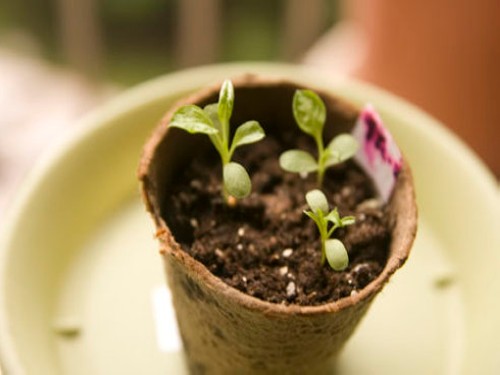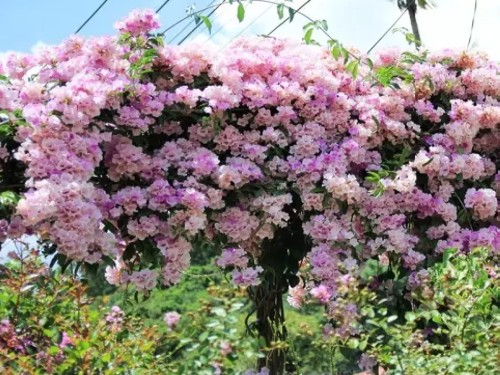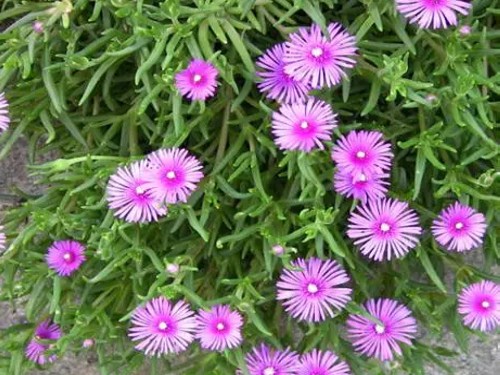Culture methods of bluebells
Campanula is often planted in flower beds, courtyards or gardens in the edge, its unique flower type, clear clean, pure and elegant color, a large bloom, especially beautiful, let people feel cheerful, happy. Campanula lovely, elegant flower type, potted into the indoor can play a different role in dress. Of course, it can also be matched with other plants and flowers, such as sunflower, ivy, etc., to create a thriving, full of vitality of the happy atmosphere, purple bellflower, and delphinium, lily, asparagus match, showing a quiet and soft temperament.
After germination and emergence, Campanula seeds are thinned and transplanted with soil. Generally, spring seedlings only grow branches and leaves in the same year, winter to maintain winter, the next May on the pot. Autumn seedlings potted in cold bed winter, with the seedlings grow pot, the next year for potted flower maintenance, the third year into the summer flowering. Summer seedling stage should create cool ventilation and good drainage conditions, growth period needs sufficient water, to strengthen fertilizer and water management, careful maintenance, so that plants in cool, ventilated environment normal growth and development.

The following small series introduces the cultivation method of bluebells:
Breeding methods:
Campanula propagation is commonly used to sow reproduction, sowing time in the autumn of August to September. Sow the prepared seeds in shallow pots or wooden boxes and place in a cool place. Campanula seeds are small, so after sowing can not be covered with soil, as long as the seeds can not be seen, watering seedlings can be used when spraying water or spray, so as not to spray too much water to make the seeds flooded rotten roots.
Seedling treatment:
Once the seedlings have taken root, they can be transplanted, still in shallow pots. Be careful not to break the roots during the transplant. When the seedlings grow to about 5 cm high, they can be transplanted to 10 cm high pots. After the roots of the seedlings grow to full pots, they can be replaced 2 to 3 times. Until the last flowering year, they can be transplanted to flower beds or the ground.
Light treatment:
Campanula likes long sunshine, 14 hours of sunshine a day can bloom naturally, if you want to advance flowering, only need 4 hours of intermittent night 30 days treatment. Campanula does not need growth regulation and topping treatment. In the early growth process, the appearance of Campanula is messy, but in the later growth process, it will naturally adjust neatly and compactly, so it does not need special regulation.
Fertilizer and water management:
Campanula should maintain a relatively high relative humidity before the emergence of radicles. The substrate should also be relatively moist. If necessary, a layer of coarse vermiculite can be covered on the young seedlings to keep moisture. If you want seedlings to grow quickly, you can apply 30 to 50PPM of calcium and nitrogen fertilizer, and then apply calcium fertilizer on top of it to make them grow quickly.
Note that bluebells take two winters to flower, so cultivation requires patience, especially in summer hot weather, which can easily cause plants to wither. Potted bluebells should not be placed on the back of high-rise buildings to prevent exposure, and timely strengthen the spraying and cooling of foliage. Campanula is also a positive-loving plant, so it cannot be placed in the shade for a long time, lacking light.
The following is a summary of the key points about the cultivation of bluebells:
1. Soil: Campanula likes relaxed, fertile and well-drained loam.
2, sunshine: bluebells like long sunshine, 14 hours of sunshine a day can naturally bloom, if you want to advance flowering, only 4 hours of intermittent night 30 days of treatment.
3. Watering: Campanula should maintain a relatively high relative humidity before the emergence of radicles, and the substrate should also be relatively moist. If necessary, a layer of coarse vermiculite can be covered on the newborn seedlings to keep moisture.
Fertilization: If you want to grow seedlings quickly, you can apply 30 to 50PPM of calcium and nitrogen, and then apply calcium fertilizer on top of it to make it grow quickly.
5. Pests: Common diseases of bluebells are powdery mildew, leaf spot and rust, which can be sprayed with 50% carbendazim WP diluted 1500 times. Aphids and thrips were the main pests, which were sprayed with 40% omethoate emulsifiable concentrate diluted 1500 times.
Time: 2019-06-01 Click:
- Prev

Culture method of garlic vine
Garlic vines, named for the smell of garlic when flowers, leaves and branches are damaged, are often used as flower corridors. When they bloom, they blossom with silver bell-like flowers. When the wind blows, they don't ring, but they smell garlic. And garlic vines are like apricot flowers, the flowers are red at first.
- Next

When does pine leaf chrysanthemum blossom?-maintenance of pine leaf chrysanthemum during flowering period
Pine chrysanthemum, also known as dragon beard Begonia, is native to southern Africa. Like warm, dry and sunny environment, neither cold-resistant, but also afraid of high temperature, afraid of waterlogging, resistant to drought. The flower color of pine leaf chrysanthemum is bright and bright, and the small petals have a velvet feeling. During the growing season, you will be exposed to at least 6 hours of sunlight every day.
Related
- Fuxing push coffee new agricultural production and marketing class: lack of small-scale processing plants
- Jujube rice field leisure farm deep ploughing Yilan for five years to create a space for organic food and play
- Nongyu Farm-A trial of organic papaya for brave women with advanced technology
- Four points for attention in the prevention and control of diseases and insect pests of edible fungi
- How to add nutrient solution to Edible Fungi
- Is there any good way to control edible fungus mites?
- Open Inoculation Technology of Edible Fungi
- Is there any clever way to use fertilizer for edible fungus in winter?
- What agents are used to kill the pathogens of edible fungi in the mushroom shed?
- Rapid drying of Edible Fungi

